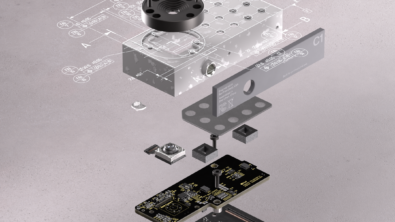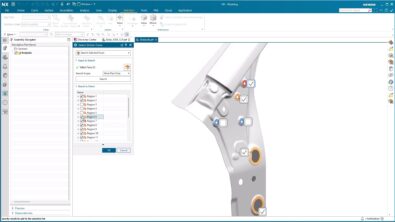NX VR for Heavy Equipment | Executive Design Review | JCB Fastrac 8250
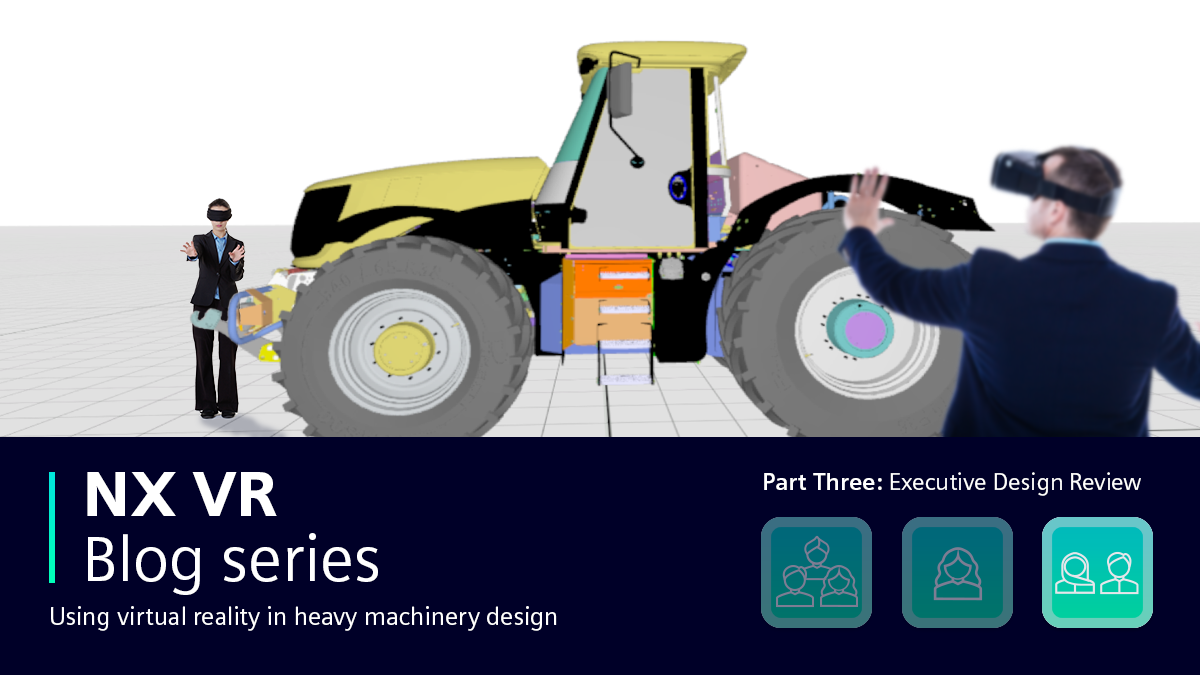
The importance of Virtual Reality in an Executive Design Review
VR continues to revolutionize the world we live in. In the context of a design workflow, the technology can benefit a range of stakeholders. In the first entry, we explored how Virtual Reality connects design teams on a global scale. The second entry focused on the individual designer, and how Virtual Reality streamlines data preparation tasks. In the third and final instalment, the spotlight shifts to the executive design review. Virtual Reality creates an immersive VR experience for the experience, giving them greater confidence when signing off on design concepts.
One-click to VR for Executive Design Review

As mentioned previously, designers and engineers can spend a lot time on data preparation tasks for a model, ready for immersive VR design reviews. This is further exacerbated when design teams choose to create numerous iterations for the same model; consider the numerous mechanical attachments that a JCB could come equipped with. It’s a fair assumption that this approach is now the norm in the 21st century. Design teams create a range of iterations to keep options open when the final design is sent through to manufacturing.
Each iteration may look spectacular, but what’s the point if they can’t be loaded into an immersive VR experience? Design teams don’t want to spend additional time ensuring the dataset is compatible for an external VR package. If this is the case, the visualization workflow slows down, increasing total time to market. Executive teams can become disgruntled due to their limited chances of reviewing iterations. Thankfully, global executive teams can access VR directly from NX, increasing their influence on the final iteration.
Working at Human Scale
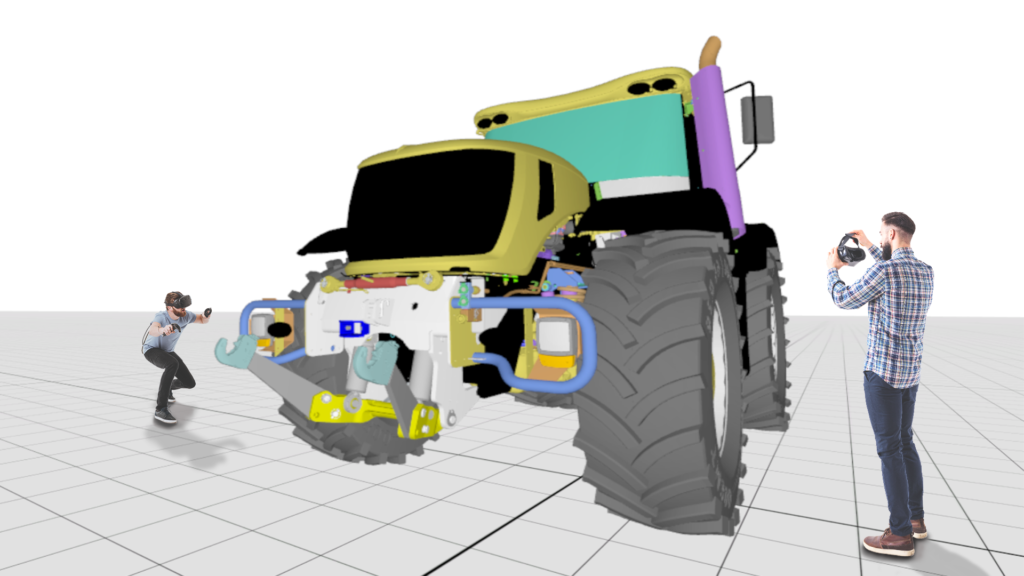
Let’s focus on the immersive element of Virtual Reality for design teams. Before the adoption of Virtual Reality (and cave walls to an extent), design teams had to rely on 2D images to see a completed model in all its glory. Of course, you get to see what the potential iterations will look like. But does it really give you a true sense of what the final product will look like?
It’s important for executive teams to be see models in an immersive environment to get a true sense of scale. This is especially true for the JCB, a huge heavy machinery vehicle that can take even the most prepared of execs by surprise. Re-creating a models physical twin in a digital environment enables executive teams to get up close and personal with the JCB. The result? An approach facilitating more informed decisions and a higher quality final product. Add in to this a reduction to need to create physical prototypes and the design workflow achieves greater efficiencies, whilst simultaneously shortening the time to market.
Familiar Inspection and Review Tools for final sign off
Design teams must implement features to be able to capture design changes for the executive team. The executive team review is the last opportunity to capture these changes. Before conducting another review, executives can informally note down any changes they wish to make. But is it worth it without a range of high-quality features to capture exactly the changes that are required? Thankfully, there are a range of features available within NX to capture every single potential design change.
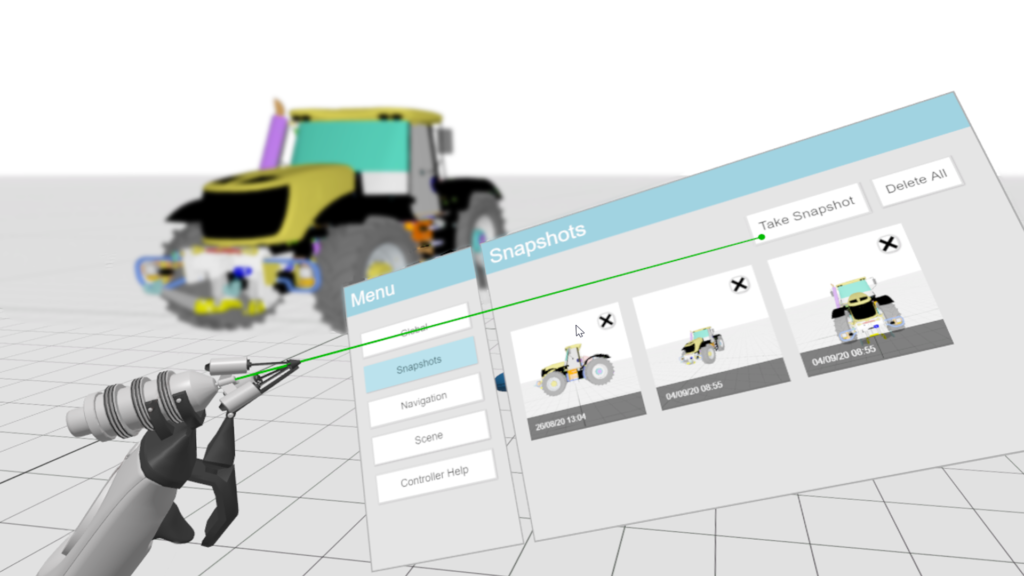
Executives use the Measure tool to identify spacing issues between parts that may previously have been missed. In addition, parts which don’t meet the desired effect can be recorded with the Markup tool. And finally, executives can combine the Markup tool with the snapshot feature to note down explicit changes to implement for the design team. These are just a selection of features at the Executive teams disposal, all enabling a greater feedback system to improve cross function communication, inevitably leading to a more representative digital twin developed as a result.
An efficient workflow, at a fraction of the cost
The Executive Design Review really allows the outstanding work of any design team to be in the spotlight. Modern day design teams will allways create several iterations, each with a specific goal in mind; to showcase a digital twin of the real-world model with different characteristics to provide options and variety to the executive team.
Virtual Reality reduces the need for physical prototypes to be produced; an essential thing to consider when creating a range of iterations for executive review. For the creation of a physical prototype, it can cost anywhere in the region of $100,000+ per design. Extrapolate this over a range of iterations throughout a whole design cycle will cost a lot of money. By adopting Virtual Reality into workflows, design teams can create several digital iterations at a fraction of the cost. The result? executive teams can review more designs to nail the perfect look.
There’s a place for Virtual Reality and Physical Prototyping in an executive design review
It is crucial to stress that whilst Virtual Reality is re-defining the visualization workflow, there will always be a place for physical prototyping. Of course, they are still expensive to create; however, the focus should be on creating physical prototypes at exactly the right time. A perfect time for this to occur is after the initial Executive Review phase, whereby the executive team have provided their feedback and are ready to see the final production model. Designers can develop a physical prototype to get a sense of the intricacies of the model, up close and personal. The final model is more representative of what the team wanted to achieve, whilst simultaneously reducing costs in the process.
The 80/20 split; Spend 80% time, cost and effort on digital prototyping, and 20% on physical prototyping
TOP TIP
Summary
And that wraps up the series on how Virtual Reality continues to help the likes of JCB to refine and improve their design workflows. It plays a crucial role at every stage of the workflow; it enables designers to conduct collaborative design reviews, immerse individual designers to make changes to datasets and gives executives a mechanism of feedback to their team.
Keep your eyes peeled for the next series!
